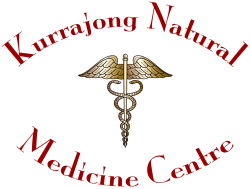Acupuncture for Labour Pain - A Chinese Medicine Perspective
What is Labour Pain
The uterus is a muscular organ that contracts powerfully to squeeze the baby out, and those contractions are the primary source of labour pain. Besides intense muscle tightening throughout the abdomen and, sometimes, the entire torso and pelvic area, a woman may feel pressure on her back, perineum, bladder, and bowels these become worse if there’s anxiety and fear [1,2].
How much pain is experienced during labour depends on a variety of factors, including:
- The strength of the contractions
- Whether labour inducing drugs are used, which induce labour and cause stronger contractions
- The baby’s size and position in the pelvis
- Whether the baby is faceup or facedown (the ideal birth position)
- The speed of your labour
How Does Traditional Chinese Medicine (TCM) view Labour Pain
Giving birth is a natural process that is associated with pain. It is not a pathology as such, however, the pain is severe and can induce fear and anxiety, which in turn increases pain during contractions.
Acupuncture has been used in China for millennia and research has demonstrated that acupuncture can reduce pain during labour, promote uterine contraction, shorten birth process, and treat postpartum disorders [3,4,5,6]
Unfortunately, in Australia there is little opportunity for women to have acupuncture during labour in a hospital setting. However, leading up to labour, there is much acupuncture and Chinese herbal medicine can do to help prepare the mind and body of the mother to be.

Acupuncture has been recognied as a potential complementary therapy to reduce pain during labour and provide various benefits during childbirth. Some of the potential benefits of acupuncture include:
Pain Relief: Acupuncture can help alleviate pain during labour by stimulating the release of endorphins, which are natural pain-relieving chemicals in the body. The insertion of acupuncture needles at specific points along the body can activate the body’s own pain modulation system, providing relief during contractions and promoting a more comfortable birthing experience.
Relaxation and Stress Reduction: Acupuncture promotes relaxation and reduces stress and anxiety levels. Labour can be an intense and stressful experience, and acupuncture can help calm the mind, regulate the nervous system, and induce a state of relaxation. By reducing stress and anxiety, acupuncture may contribute to a more positive birthing experience.
Natural Pain Management: Acupuncture offers a drug-free option for pain management during labor. This can be particularly beneficial for women who prefer to avoid or minimize the use of pharmaceutical pain relief methods, such as epidurals or analgesics. Acupuncture provides a natural alternative that can be used alone or in conjunction with other pain management techniques.
Labour Progression: Acupuncture has been shown to support the progression of labour. Specific acupuncture points can be used to stimulate uterine contractions and promote cervical ripening, potentially aiding in the natural progression of labour. This can be beneficial for women who are experiencing a slow or stalled labour.
Reduced Need for Medical Interventions: By promoting relaxation, pain relief, and optimal labour progression, acupuncture may help reduce the need for medical interventions during childbirth. This can include a lower likelihood of interventions such as cesarean sections, vacuum or forceps-assisted deliveries, or the use of synthetic oxytocin to induce or augment labour.
It’s important to note that the effectiveness of acupuncture in reducing pain during labour can vary for each individual. Additionally, acupuncture should be administered by a qualified and experienced acupuncturist.
At Kurrajong Natural Medicine Centre we are ready to help. Simply call (02) 4573 0784 to discuss what approach is best for you.
What You Can Do to Help Yourself If You Suffer From Labour Pain
Breathing Techniques: Focused breathing can help you relax, manage pain, and maintain control during contractions. Deep, slow breaths can promote relaxation and reduce tension. Some popular techniques include slow abdominal breathing, patterned breathing (such as “hee-hee-hoo”), or breathing along with a focal point or visualization.
Movement and Positioning: Changing positions and engaging in gentle movements can aid in pain management and promote labor progression. Experiment with different positions, such as walking, swaying, rocking on a birth ball, or leaning forward on a support surface. Movement can help relieve pressure and provide comfort during contractions.
Warm Water Therapy: Immersion in a warm bath or shower can help relax the body and alleviate pain. The buoyancy of water can reduce the sensation of weight and provide a soothing environment. Many hospitals and birthing centers offer birthing tubs or showers specifically designed for laboring women.
Massage and Counterpressure: Gentle massage or applying pressure to certain areas can help relieve tension and provide pain relief. You can ask your birth partner or a support person to apply massage techniques or use their hands or a warm compress to provide counterpressure on your lower back or hips.
Relaxation Techniques: Practicing relaxation techniques, such as visualisation, guided imagery, or progressive muscle relaxation, can help reduce anxiety and promote a sense of calm during labour. You can imagine yourself in a peaceful setting or focus on mentally relaxing each muscle group.
Acupressure: Acupressure, as discussed above, has been demonstrated to help relieve pain during labour. You can learn these points and techniques beforehand and have your birth partner apply pressure as needed during contractions.
Continuous Support: Having a supportive birth partner or a doula can make a significant difference in managing labour pain. Their presence can provide emotional support, reassurance, and physical assistance during contractions.
It’s important to remember that every labour experience is unique, and what works for one person may not work for another. Discuss your pain management preferences and options with your healthcare provider or midwife beforehand.
In Chinese Herbal Medicine various herbs have been traditionally used to help manage pain. Here are a Some Chinese herbs that have been historically used for managing pain during labour include:
Yan Hu Suo (Corydalis Yanhusuo): Yan Hu Suo is a herb commonly used in TCM for its analgesic properties. It has been traditionally used to relieve pain, including pain associated with labour. Yan Hu Suo is believed to work by promoting blood circulation and alleviating Qi stagnation, which can contribute to pain relief.
Motherwort (Leonurus cardiaca): Motherwort is a herb often used in TCM for gynecological issues and is considered to have a calming and relaxing effect. It helps to regulate contractions and ease pain. Motherwort may be consumed as an herbal infusion or as part of a TCM formula.
Safflower (Carthamus tinctorius): Safflower is a herb commonly used in TCM to promote blood circulation and relieve pain. It helps facilitate labor by promoting uterine contractions and reducing pain. Safflower may be used in combination with other herbs in TCM formulas.
Dang Gui (Angelica sinensis): Dang Gui, also known as Chinese Angelica, is a widely used herb in TCM for women’s health. It nourish the blood, regulate menstrual cycles, and promote a smooth labour process. Dang Gui may be included in TCM formulas aimed at supporting labour and reducing pain.
Chuan Xiong (Ligusticum chuanxiong): Chuan Xiong is another herb commonly used in TCM for its ability to promote blood circulation and alleviate pain. It is often included in formulas that target pain relief, including labor pain.
It’s important to consult with a qualified TCM practitioner or a healthcare professional experienced in herbal medicine before using any herbs during pregnancy or labour. They can provide guidance, assess your individual needs, and ensure the safe and appropriate use of herbs in managing pain before, during and after labour.
References
1. Smith CA, Collins CT, Levett KM, Armour M, Dahlen HG, Tan AL, Mesgarpour B. Acupuncture or acupressure for pain management during labour. Cochrane Database of Systematic Reviews 2020, Issue 2. Art. No.: CD009232. https://doi.org/10.1002/14651858.CD009232.pub2
2. URL: https://www.parents.com/pregnancy/giving-birth/labor-and-delivery/understanding-labor-pain/ last visited: 13th July 2021
3. Chen, Y., Zhang, X., Fang, Y., & Yang, J. (2014). Analyzing the study of using acupuncture in delivery in the past ten years in china. Evidence-based complementary and alternative medicine : eCAM, 2014, 672508. https://doi.org/10.1155/2014/672508
4. Schlaeger, J. M., Gabzdyl, E. M., Bussell, J. L., Takakura, N., Yajima, H., Takayama, M., & Wilkie, D. J. (2017). Acupuncture and Acupressure in Labor. Journal of midwifery & women’s health, 62(1), 12–28. https://doi.org/10.1111/jmwh.12545
5. Levett, K. M., Smith, C. A., Dahlen, H. G., & Bensoussan, A. (2014). Acupuncture and acupressure for pain management in labour and birth: a critical narrative review of current systematic review evidence. Complementary therapies in medicine, 22(3), 523–540. https://doi.org/10.1016/j.ctim.2014.03.011
6. Wu, L., Yin, Y., Sun, K., Wu, L., Hou, H., Liu, X., Yi, W., & Li, S. (2017). Effectiveness of acupuncture versus spinal-epidural anesthesia on pain during labour: a randomized controlled trial. Journal of traditional Chinese medicine = Chung i tsa chih ying wen pan, 37(5), 629–635.
Disclaimer
Disclaimer information for users of the Kurrajong Natural Medicine Centre, Namaste Yoga Kurrajong and The Herbal Health Coach website.
Page last updated: 24th June 2023
Information provided for education and research information only
The information on this website is presented by Kurrajong Natural Medicine Centre for the purpose of disseminating health information free of charge for the benefit of the public.
While Kurrajong Natural Medicine Centre has exercised due care in ensuring the accuracy of the material contained on this website, the information on the site is made available on the basis that Kurrajong Natural Medicine Centre is not providing professional advice on a particular matter.
This website is not a substitute for independent professional advice. Nothing contained in this site is intended to be used as medical advice and it is not intended to be used to diagnose, treat, cure or prevent any disease, nor should it be used for therapeutic purposes or as a substitute for your own health professional’s advice.
Kurrajong Natural Medicine Centre does not accept any liability for any injury, loss or damage incurred by use of or reliance on the information provided on this website.
Quality of information
Kurrajong Natural Medicine Centre makes every effort to ensure the quality of the information available on this website and updates the information regularly. Before relying on the information on this site, however, users should carefully evaluate its accuracy, currency, completeness and relevance for their purposes, and should obtain any appropriate professional advice relevant to their particular circumstances. Kurrajong Natural Medicine Centre cannot guarantee and assumes no legal liability or responsibility for the accuracy, currency, completeness or interpretation of the information.
The material may include the views or recommendations of third parties and does not necessarily reflect the views of Kurrajong Natural Medicine Centre or indicate a commitment to a particular course of action.
Links to other websites
This website contains links to other websites which are external to Kurrajong Natural Medicine Centre. Kurrajong Natural Medicine Centre takes reasonable care in selecting linking websites but Kurrajong Natural Medicine Centre accepts no responsibility for material contained in a website that is linked to this site. It is the responsibility of the user to make their own decisions about the accuracy, currency, reliability and correctness of information contained in linked external websites.
Links to external websites are provided for the user’s convenience and do not constitute an endorsement or a recommendation of any third party products or services offered by virtue of any information, material or content linked from or to this site. Users of links provided by this site are responsible for being aware of which organisation is hosting the site they visit.
Views or recommendations provided in linked sites may include the views or recommendations of third parties and do not necessarily reflect those of Kurrajong Natural Medicine Centre or indicate a commitment to a particular course of action. .



